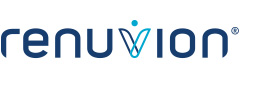Risk associated with the use of the Renuvion® system for subdermal coagulation may include: Helium embolism into the surgical site due to inadvertent introduction into the venous or arterial blood supply system, unintended burns (deep or superficial), pneumothorax, temporary or permanent nerve injury, ischemia, fibrosis, infection, pain, discomfort, gas buildup resulting in temporary and transient crepitus or pain, bleeding, hematoma, seroma, subcutaneous induration, pigmentation changes, increased healing time, unsatisfactory scarring, asymmetry and/or unacceptable cosmetic result. There may be additional risks associated with the use of other devices along with Renuvion and there may be an increased risk for patients who have undergone prior surgical or aesthetic procedures in the treatment area. As with any procedure, individual results may vary. As with all energy devices there are inherent risks associated with its use, refer to the IFU for further information.
The Renuvion system is intended to be used with compatible electrosurgical generators for the delivery of radiofrequency energy and/or helium plasma to cut, coagulate and ablate soft tissue during open surgical procedures. The Apyx® Plasma/RF Handpiece (APR HP) is a sterile, single use electrosurgical (monopolar) device intended to be used in conjunction with compatible generators for the percutaneous delivery of radiofrequency energy and/or helium plasma for cutting, coagulation and ablation of soft tissue.
The Renuvion system has received a general clearance and has not been determined to be safe or effective for use in any specific indication or anatomical location. Apyx Medical does not promote its general clearance products for any specific surgical specialty or subspecialty.
References:
- Feldman LS, et al. (eds). The SAGES Manual on the Fundamental Use of Surgical Energy (FUSE), ISBN 978‐1‐4614‐2073‐6.
- Chen SS, Wright NT, Humphrey JD. Heat-induced changes in the mechanics of a collagenous tissue: isothermal free shrinkage. Journal of Biomechanical Engineering 1997:109:372-378.
- McDonald MB. Conductive Keratoplasty: A Radiofrequency-based Technique for the Correction of Hyperopia. Trans Am Ophthalmol Soc 2005;103:512-536.
- Chen SS, Humphrey JD. Heat-induced changes in the mechanics of a collagenous tissue: pseudoelastic behavior at 37° C. J Biomech 1998;31:211-216.
- Wright NT, Humphrey JD. Denaturation of collagen during heating: An irreversible rate process. Annu Rev Biomed Eng; 2002;4:109-128.
- Ramsdell WM. Fractional Carbon Dioxide Laser Resurfacing. Semin Plast Surg 2012;26:125-130.
- Masghati S, Pedroso J, Gutierrez M, Stockwell E, Volker W, Howard DL. Comparative Thermal Effects of J-Plasma®, Monopolar, Argon, and Laser Electrosurgery in a Porcine Tissue Model. Surgical Technology International, 2019;34:1-5. PMID: 30825320.
- American Society of Plastic Surgeons. Plastic Surgery Statistics Report. 2019. https://www.plasticsurgery.org/documents/News/Statistics/2019/plastic-surgery-statistics-full-report-2019.pdf.
- Doolabh, V, Ruff, P. A Retrospective Chart Review of Subdermal Neck Coagulation Using Helium Plasma Technology. Dermatological Reviews. 2020; 1‑8. https://doi.org/10.1002/der2.32.
- Kluska M, Nasseri S, Bobrovnikov V. Helium Plasma Versus Radiofrequency for Energy-Enhanced Liposuction: A Prospective Single-Blind Pilot Study (White Paper). 2020. https://renuvion.org/wp-content/uploads/2021/04/kluska-whitepaper_helium-plasma-vs-rf-for-energy-enhanced-lipo_mm0323.00_062220.pdf.
- Renuvion Physician Survey Results, MM0317.00 0620 – https://renuvion.org/wp-content/uploads/2020/07/renuvion-physician-survey-results-mm0317-00_070820.pdf.
- Ruff PG, Doolabh V, Zimmerman EM, Gentile RA. Safety and efficacy of helium plasma for subdermal coagulation. Dermatological Reviews. 2020;1‑7. https://doi.org/10.1002/der2.34.
- Zamora J, Roman S. Subcutaneous Neck Skin Plasma Tightening. Advances in Cosmetic Surgery 2019; 2(1):89-95.


